Japanese Mayonnaise differs from common mayonnaise found around the world in that it is characterized by a less acidic, creamier texture and a milder flavor. It has a wide range of uses and can be incorporated not only into salads, sandwiches, and sauces but also into main dishes and side dishes.
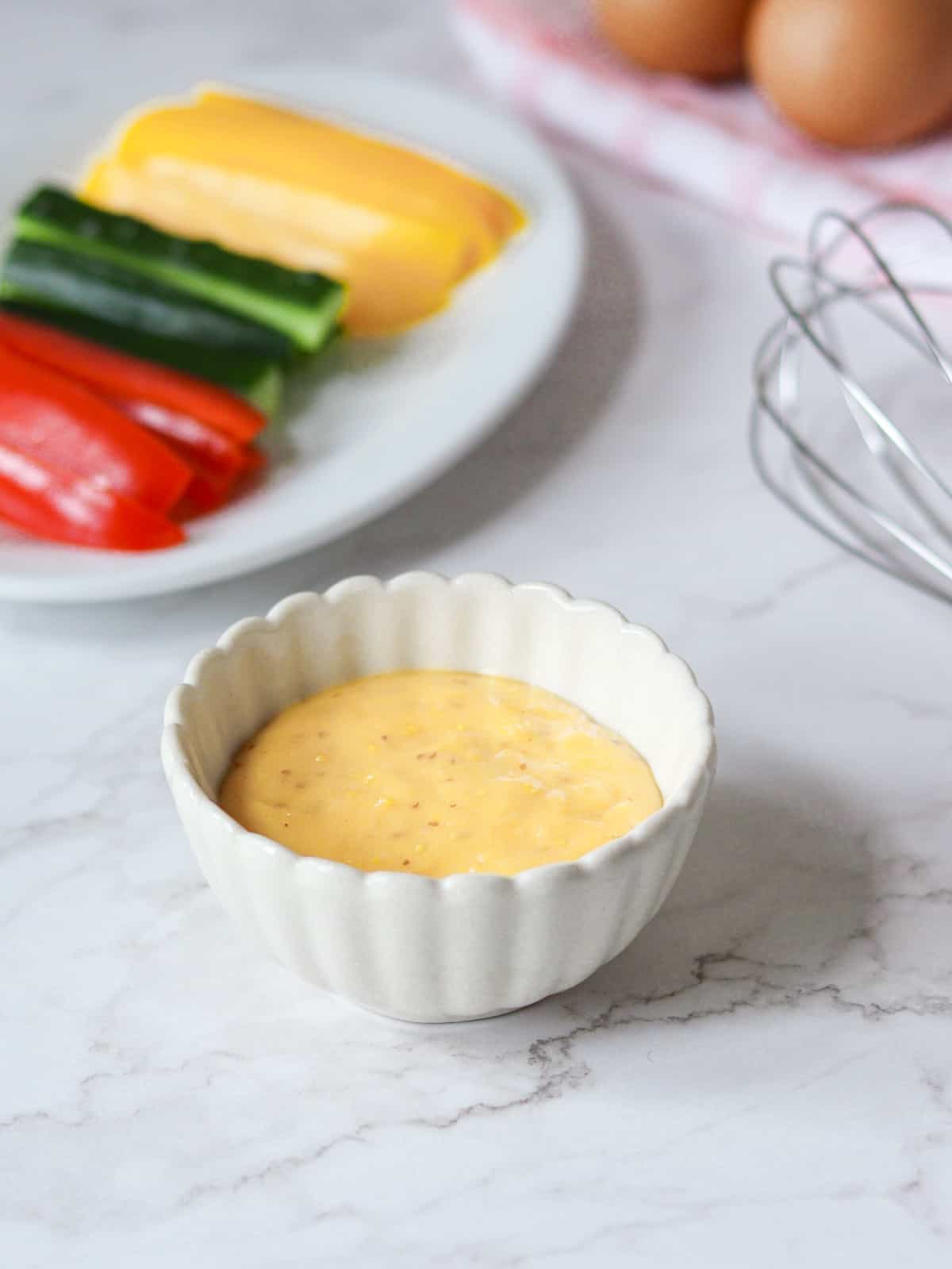
Jump to:
What is Japanese Mayonnaise?
Japanese Mayonnaise is a condiment made from eggs, oil, vinegar, and other seasonings. The primary ingredient is oil, and it is made by emulsifying oil with other ingredients. Although common mayonnaise is also made using similar ingredients and processes, there are some differences in the types of ingredients used, as follows:
• Eggs
While common mayonnaise uses whole eggs, Japanese mayonnaise uses only egg yolks. Using only egg yolks results in a deeper yellow color and creates a richer, thicker, creamier, and smoother texture.
• Vinegar
Japanese mayonnaise is typically made with milder vinegar, such as rice vinegar, instead of more acidic types like distilled white vinegar. The use of mildly acidic vinegar creates a milder and less acidic taste.
The two points above are the main differences between common mayonnaise and Japanese mayonnaise. Additionally, Japanese mayonnaise is made by adding salt, mustard, and other seasonings to adjust the flavor, similar to common mayonnaise.
Choosing the quality ingredients
When making Japanese mayonnaise at home, it is prepared simply by mixing ingredients, so the quality of these ingredients strongly influences its flavor. Therefore, it is recommended to use fresh, high-quality eggs and oil whenever possible. In particular, raw eggs carry a potential risk of food poisoning, so be sure to use pasteurized eggs that are safe to consume raw.
Additionally, it is advisable to avoid using strongly flavored oils, such as olive oil, sesame oil, and coconut oil, as they can overpower the flavor of the mayonnaise. Furthermore, sunflower oil is not recommended because it can cause the mayonnaise to become too firm in texture when chilled. Japanese mayonnaise typically uses plant-based oils with mild flavors, such as soybean oil, rice bran oil, and canola oil.
Customizing to your taste
When looking at packages of mayonnaise sold in Japan, you might notice that the seasoning ingredients vary depending on the brand. Each company uses different ingredients to enhance the flavor of mayonnaise, including salt, pepper, mustard, garlic, ginger, and honey.
So, while I share a simple recipe on this page, you can also adjust the taste to your preference by adding your favorite ingredients or reducing the amount of oil to make it healthier. Try the recipe as instructed initially, and then customize it to your liking the next time.
Flavoring of Kewpie Mayo
When it comes to Japanese mayonnaise, many people associate it with the commercially available 'Kewpie Mayo.' Kewpie Mayo is sold worldwide and is often considered synonymous with Japanese mayonnaise.
Kewpie Mayo contains monosodium glutamate (MSG), which enhances its umami flavor. Therefore, if you want to recreate a flavor of mayonnaise similar to Kewpie Mayo, consider incorporating a small amount of instant dashi granules into the recipe.
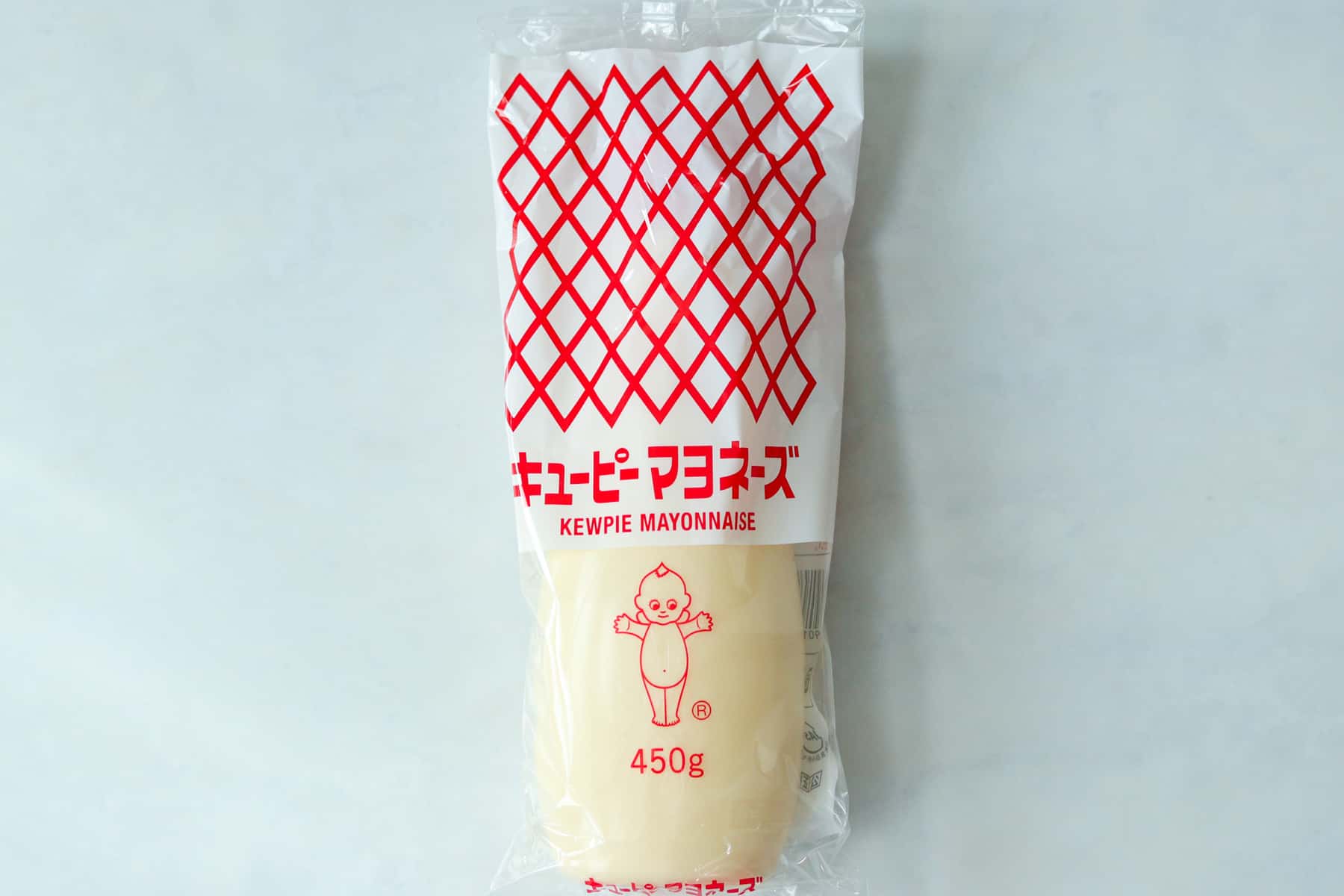
However, not all mayonnaises sold in Japan contain MSG, and when making mayonnaise at home in Japan, it is not common practice to add MSG. It is possible to make Japanese mayonnaise delicious without MSG, so feel free to make it according to your preference.
Emulsification tools
To make mayonnaise, you need an emulsifying tool like a whisk, hand mixer, or blender. This time, I used a whisk, but if you choose a hand mixer or blender, you can make mayonnaise more quickly and with less effort.
Additionally, using these tools allows you to create mayonnaise with a smoother texture than when mixed by hand, as they break down the oil into smaller droplets. If you have these tools, I highly recommend using them.
Making tips
Mayonnaise is made by mixing eggs and oil with other ingredients to emulsify them. However, if emulsification fails, no matter how much you continue to mix, it will remain in liquid form and won't become thick mayonnaise. By keeping the following points in mind, you can successfully make Japanese mayonnaise.
• Bring the eggs to room temperature before using.
Egg yolks contain lecithin, which helps emulsify the mixture. However, at low or high temperatures, the movement of lecithin particles slows down, reducing its effectiveness. The temperature range at which lecithin is most effective is 61-65℉ (16-18℃). Remember that at temperatures below 50℉ (10℃) or above 86℉ (30℃), the movement slows down, so it is essential to use eggs at room temperature.
• Use mustard.
While mustard is not a necessary ingredient for Japanese mayonnaise, it is beneficial as it contains components that aid in emulsification. Adding mustard not only enhances the flavor but also helps with the emulsification process, making it easier to prepare mayonnaise.
• Avoid adding vinegar at the beginning.
By not adding vinegar at the beginning, you can pour the oil into a thick mixture, making it easier to emulsify. You may have seen recipes in books or on websites that add vinegar from the start, but delaying the addition of vinegar definitely makes it easier to make mayonnaise without failure. I strongly recommend that you give it a try.
• Do not use old oil.
Old oil contains decomposed components that can hinder the emulsification process.
• Add oil little by little in several batches and blend thoroughly each time.
If you add a large amount of oil at once, it will not emulsify properly. At this point, making mayonnaise will fail. Be sure to add the oil little by little, blending thoroughly each time.
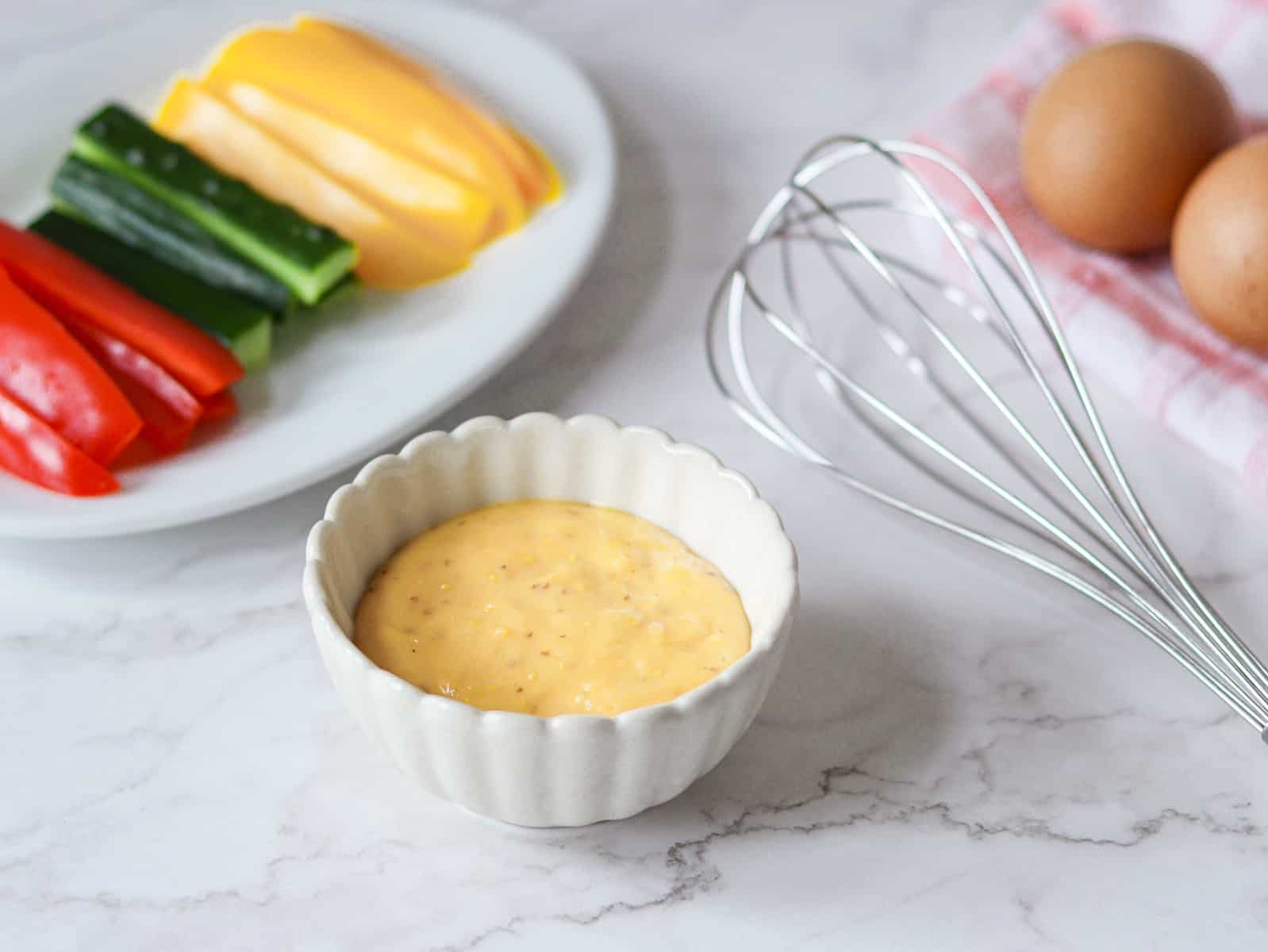
📋Step-by-step recipe
Equipment
- a whisk, hand mixer, or blender
Ingredients
- 1 large egg yolk (about 1.75 oz/50 g, excluding the shell. Bring an egg to room temperature before using.)
- ½ tsp mustard
- ⅖ cup mild-flavored oil (such as soybean oil, rice bran oil, rapeseed oil)
- ½ tsp salt
- ½ Tbsp rice vinegar (or mildly acidic vinegar)
Instructions
🕒 Total: 10 mins
Step 1
Put egg yolk and mustard in a bowl and mix them together.
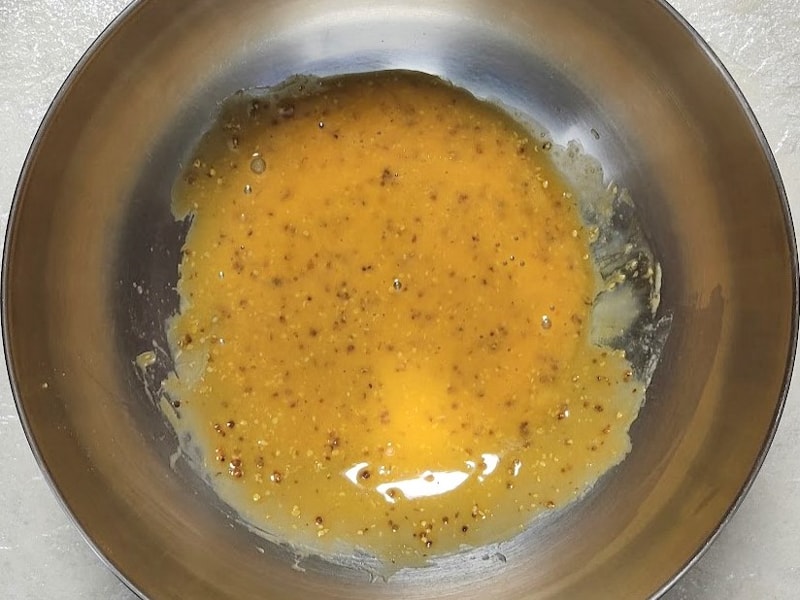
Step 2
Add 1 teaspoon (1 tsp) of oil to the mixture and blend thoroughly to emulsify.
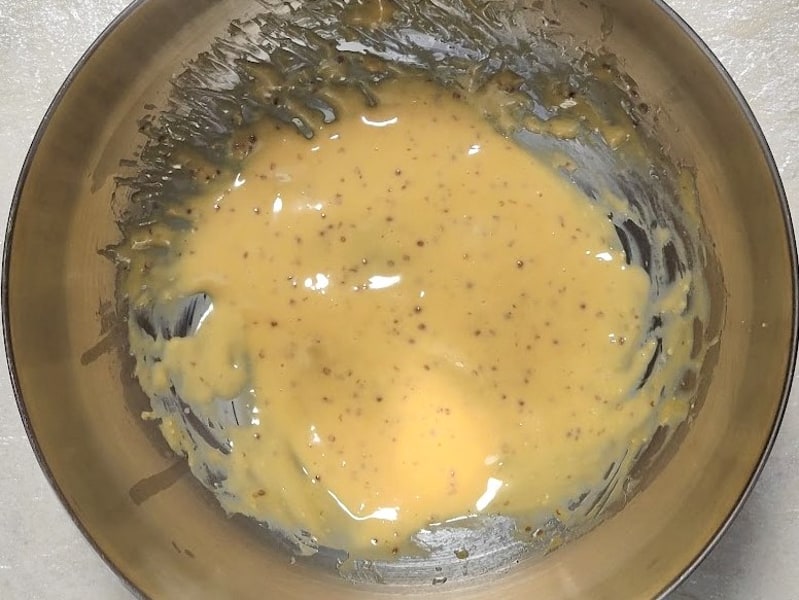
Step 3
Add another teaspoon of oil to the mixture and blend thoroughly. Repeat this process until you have incorporated half of the total amount of oil specified in the recipe.
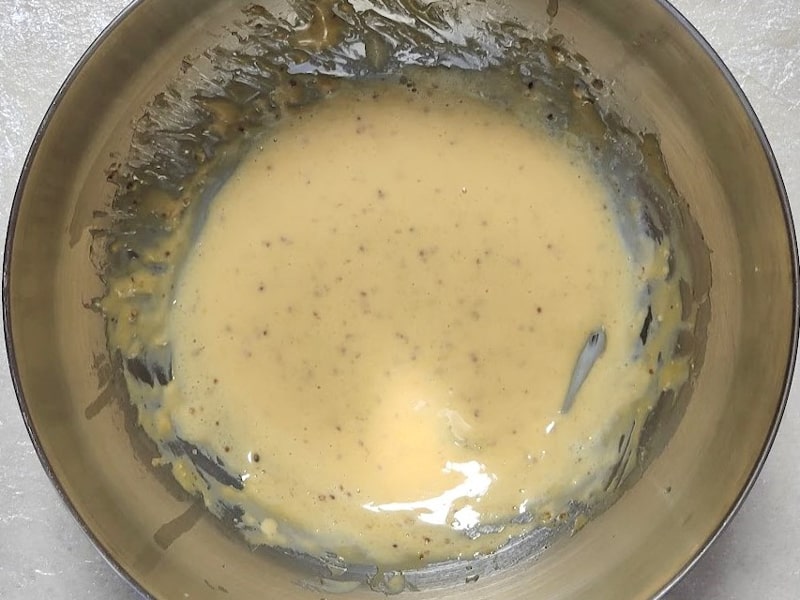
Step 4
Add salt and vinegar to the mixture and mix everything together.
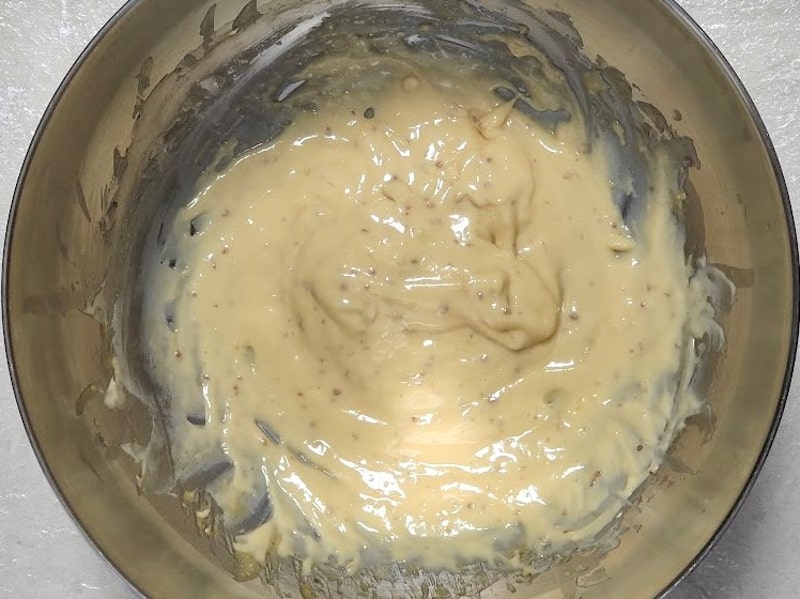
Step 5
Add another tablespoon (1 Tbsp) of oil to the mixture and blend thoroughly. Repeat this process until you have incorporated all of the oil specified in the recipe.
To store
You can store it in the refrigerator for up to 4 days. Unlike store-bought products, it doesn't contain preservatives, so it has a shorter shelf life.
If you try this recipe, I’d love to hear what you think. Please consider leaving a review and star rating in the comments below. If you enjoyed it, I’d really appreciate it if you shared it with your friends.
Recipe card
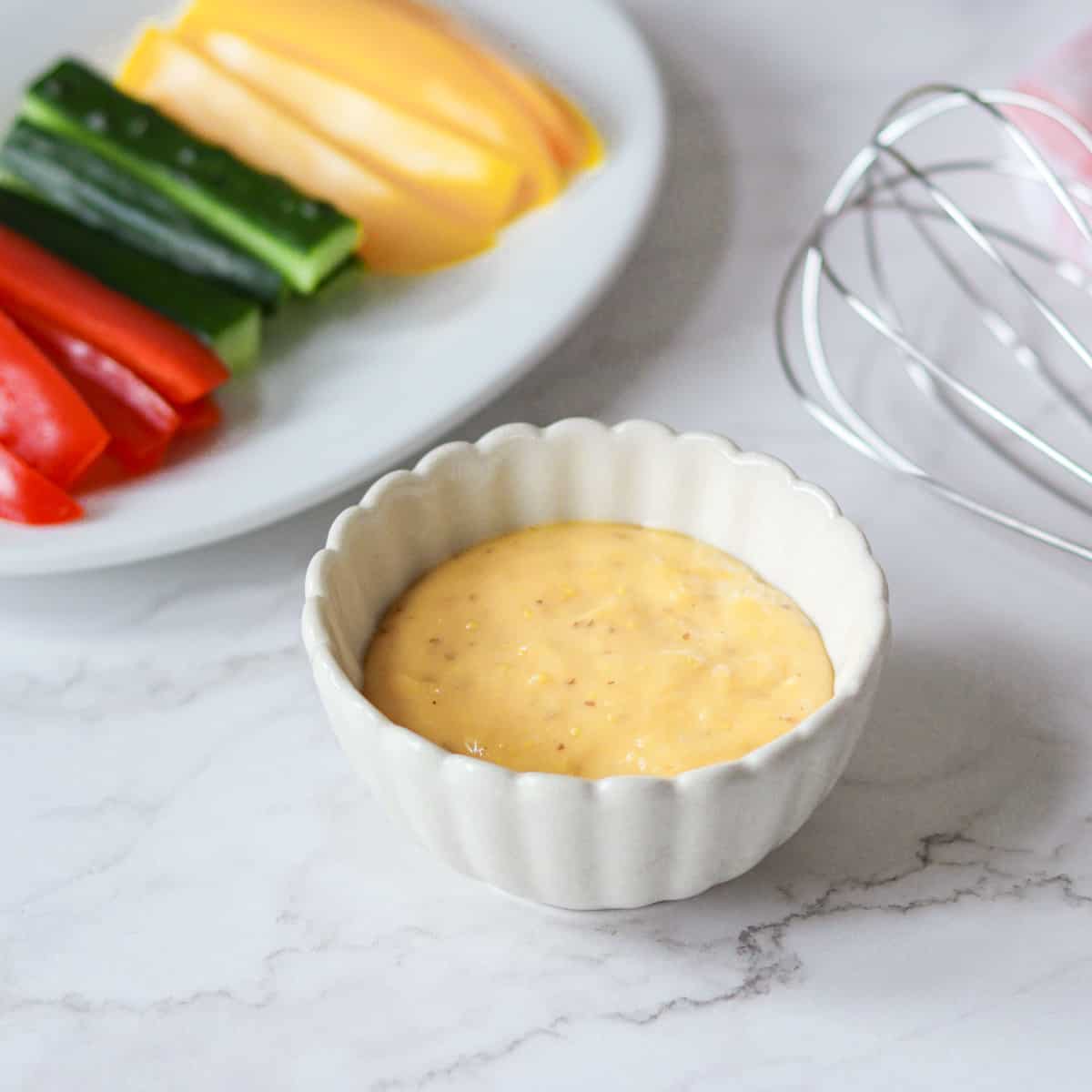
Easy Homemade Japanese Mayonnaise
Equipment
- a whisk, hand mixer, or blender
Ingredients
- 1 large egg yolk (about 1.75 oz/50 g, excluding the shell. Bring an egg to room temperature before using.)
- ½ tsp mustard
- ⅖ cup mild-flavored oil (such as soybean oil, rice bran oil, rapeseed oil)
- ½ tsp salt
- ½ Tbsp rice vinegar (or mildly acidic vinegar)
Instructions
- Put egg yolk and mustard in a bowl and mix them together.
- Add 1 teaspoon (1 tsp) of oil to the mixture and blend thoroughly to emulsify.
- Add another teaspoon of oil to the mixture and blend thoroughly. Repeat this process until you have incorporated half of the total amount of oil specified in the recipe.
- Add salt and vinegar to the mixture and mix everything together.
- Add another tablespoon (1 Tbsp) of oil to the mixture and blend thoroughly. Repeat this process until you have incorporated all of the oil specified in the recipe.
Notes
- You can store it in the refrigerator for up to 4 days. Unlike store-bought products, it doesn't contain preservatives, so it has a shorter shelf life.



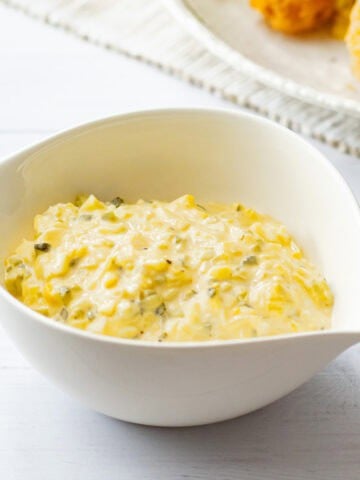

Leave a Rating and a Comment